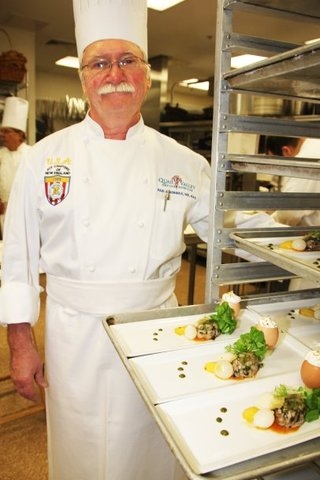
Now What?
05 September 2020We need to face the current harsh reality and stand up, take a deep breath, bring our teams together and ask the question: “Now what?”
By Paul Sorgule, MS, ACC
Many of you are totally immersed in trying to figure out how to deliver your programs this fall. The logistics are mind numbing, the problems are significant, and the dangers are looming. Underneath it all is a desire to deliver the best education possible to students who have hopes of making a difference in the food business. There is no question these challenges are foremost in your mind and totally consuming of your time. However, the question that should be rallying for your attention is: Now what?
Everything is different, everything has changed and as much as we hope for the day when life returns to normal – deep inside we know this is not likely to occur. As Vince Lombardi, the consummate past coach of the Green Bay Packers, once said: “Hope is not a strategy.” I know we don’t want to hear this, nor do we want to think in these terms, but – it will never be the same as it was. Keep in mind there were significant challenges facing culinary education even before the pandemic became part of our reality.
Let’s begin with a wake-up call:
- There will be no real sense of normalcy until we have herd immunity through the distribution of an effective vaccine.
- If (and still a strong if) science quickly develops a safe and effective vaccine, there will not be nationwide distribution until the spring of 2021. This means it will likely be fall of 2021 before we are on pace to see herd immunity as a reality.
- The restaurant industry has been decimated and permanent closures will continue until herd immunity is reached. This important part of our economy is looking at another year of impossible challenges.
- People do need to include restaurants in their lives. It is important at many different levels. But, they will not embrace the experience at a necessary level until people feel safe.
- There will be far less need for graduates of culinary programs and far less interest in attending culinary schools without a robust restaurant industry.
- Culinary education will have less appeal to tactile learners who fill our classrooms without dynamic face-to-face cooking and learning and team problem solving.
- Even when we see herd immunity as a possibility, it will take time for the restaurant industry to refresh and rebuild the trust and relationships that had been an essential element of their business model.
- The bookends for successful culinary programs, admissions and graduate placement, are going to be challenged for some time.
I’m sorry to be blunt, but we need to face this harsh reality so we can stand up, take a deep breath, bring our teams together and ask that question: “Now what?”
As important as it is for us to work on today and ensure we are able to address the class cohort engaged with our schools this fall, we must invest time in discussing, researching, debating, and scenario-planning how to prepare for a much different tomorrow. This is the time to bring our stakeholders to the table to work on addressing solutions to longer-term problems and set a course of action for a brave new world in culinary education. Here are some thoughts to stimulate that conversation:
- Communication: There has never been a more important time to open those lines of communication with everyone including faculty members, administration, students, alumni, chefs, industry leaders, employers, etc. This is not a challenge that can be addressed in a silo. This is not just our challenge as educators. This is everyone’s challenge.
- Collaboration: Culinary education will never be robust without an equally robust food industry. We need to look for ways to collaborate with numerous food business segments to collectively find solutions to our challenges. Culinary programs should be at the ready to help restaurants figure out the new normal, help vendors address supply chain shortfalls that have become so apparent, help the media find ways to tell the story and positively impact restaurants, and address the challenges that have plagued the industry for decades. This may be part of education’s new role.
- Open minds: Smarting with the reality that the need for wholesale change is imminent, we must realize that our comfort zone will be a target. Things will be different, and they must be different. We cannot waste time resisting change. Keep an open mind and support what needs to be done.
- Put aside the sacred cows: The process of assessment will challenge everything. We need to put aside our natural defenses and eliminate from our repertoire those self-imposed walls like: “We can’t do that,” “That’s not how we do things,” “We can’t change that,” and “We tried that before and it didn’t work.”
- Build learning organizations: The first step is setting the stage for creating a learning organization where everyone in your operation is open to listening, researching, collaborating, moving in a different direction, welcoming comments and new ideas, and being enthusiastic about the resulting opportunities.
“Now what?” need not be a negative statement expressed through exasperation, but rather a statement of excitement about moving forward.
Paul Sorgule, MS, AAC, president of Harvest America Ventures, a mobile restaurant incubator based in Saranac Lake, N.Y., is the former vice president of New England Culinary Institute and a former dean at Paul Smith’s College. Contact him at This email address is being protected from spambots. You need JavaScript enabled to view it..
